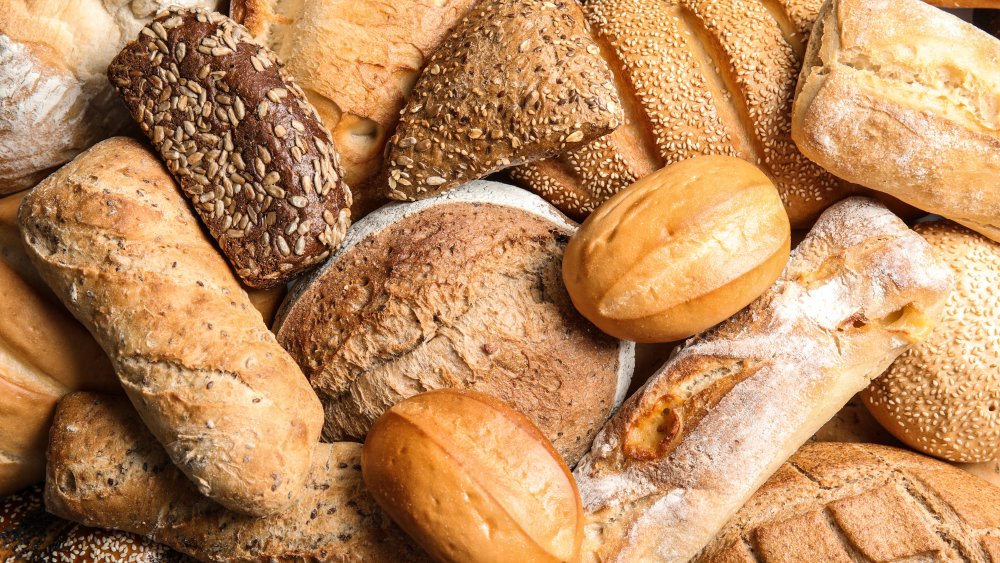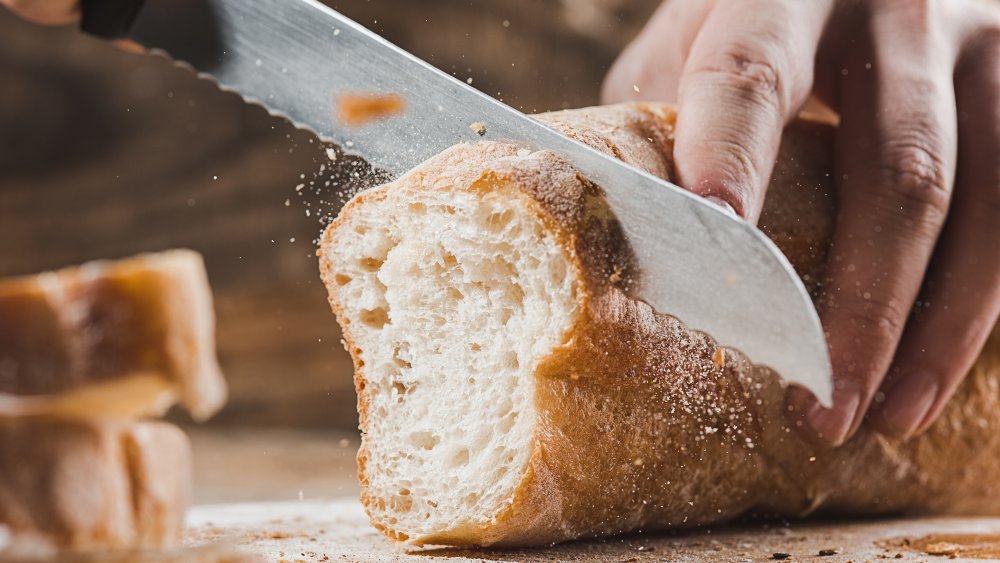How Long Does Bread Really Last?
Baked, buttered, toasted, grilled — no matter how you slice it (literally), bread is considered an essential food around the world for a reason. Cemented as a staple over thousands of years, it's been deemed "as old as the history of civilization" itself (via BBM Magazine).
Today, a dizzying array of bread varieties satisfies our carb cravings, from mass-produced slices to artisanal, locally handcrafted loaves to gluten-free and sprouted-grain recipes — great for variety's sake, but making the question of shelf life a bit more complicated.
The short answer: According to Healthline, bread stored on the counter (i.e., at room temperature) lasts for three to seven days, and the true number varies according to a few factors, including storage methods and ingredients.
Does It Go Bad? notes that bread's limited window of edibility is mainly caused by its penchant for growing mold, which translates to a safety issue, while staleness is another concern but mainly affects bread's flavor. (Luckily, there are several methods for keeping bread fresh or even reviving bread that's gone stale.)
Buying and storing bread for the best shelf life
Ever read the label on prepackaged breads in grocery stores and wonder what all of those long words are? Well, some of them, including sodium benzoate, calcium propionate, potassium sorbate, and sorbic acid, are preservatives designed to keep mold growth at bay for longer periods, so those types are most likely to achieve that longer seven-day shelf life .
However, many shoppers today shun preservatives; after all, at its most basic, bread is made from three ingredients — water, yeast, and flour. It is this type (without added preservatives, as you might find in a local bakery) that will sport the shortest shelf life, perhaps three to four days at best, Healthline estimates. Likewise, gluten-free bread, often made sans preservatives, also develops mold more quickly (via Gluten-Free Living).
Storage will also affect the life of bread. Though the estimates above refer to room-temperature conditions, refrigeration and freezing can significantly help delay the onset of mold. Does It Go Bad? notes that the fridge prolongs life by a few days (upping shelf life to seven to 12 days for store-bought, five to eight for homemade) if stored in a tightly sealed package, while freezing can maintain bread for three months or longer.
The main caveat of storing bread in cooler environments? Bread stales more quickly in refrigeration, so, according to an experiment by Serious Eats, freezing and reviving through a reheat is a better bet for slices or loaves that won't be consumed immediately.

